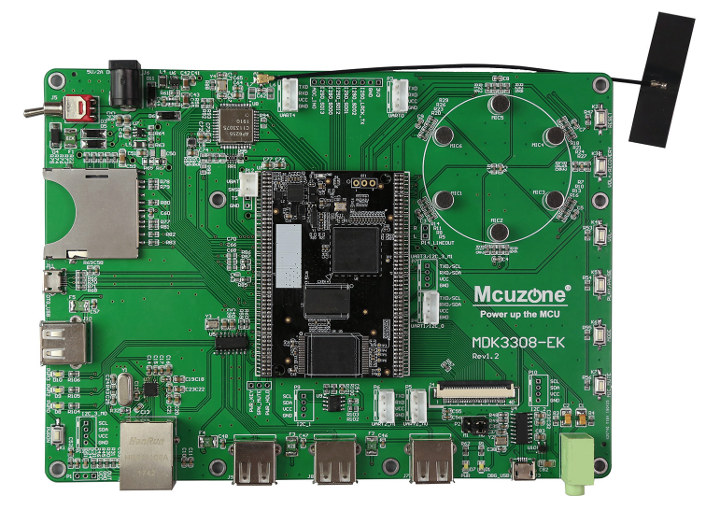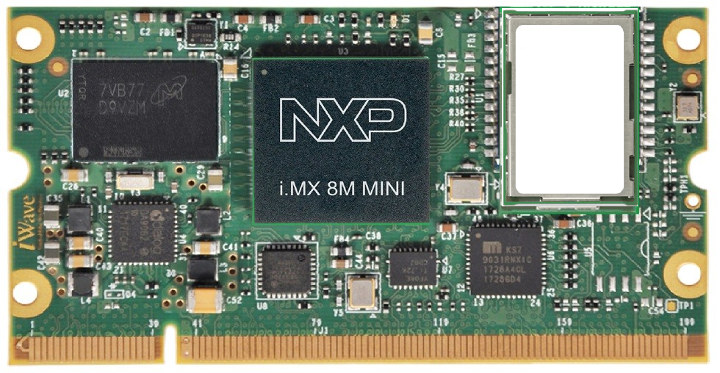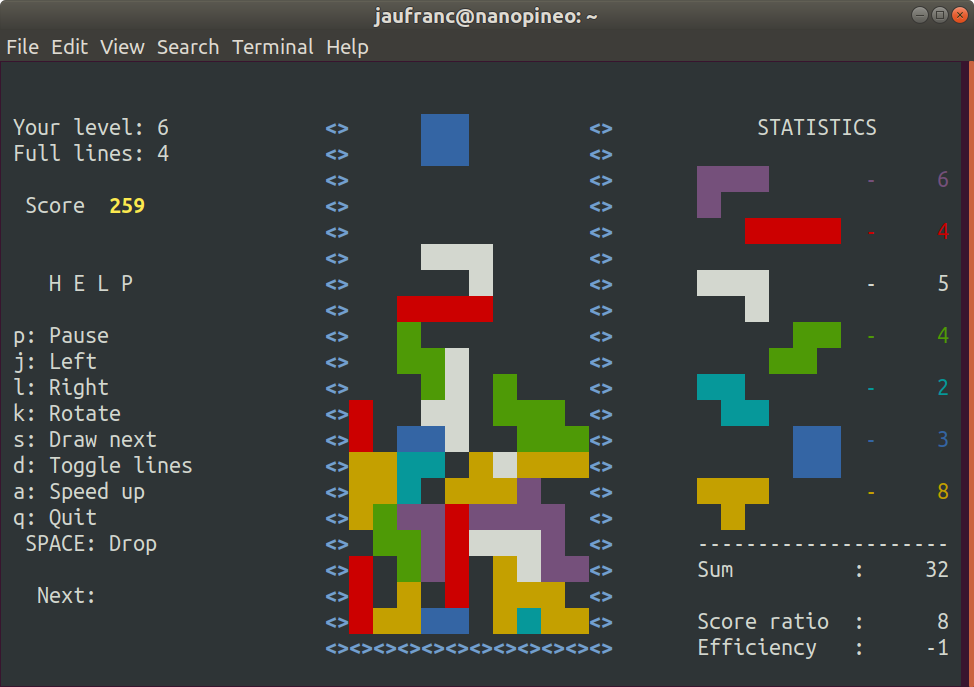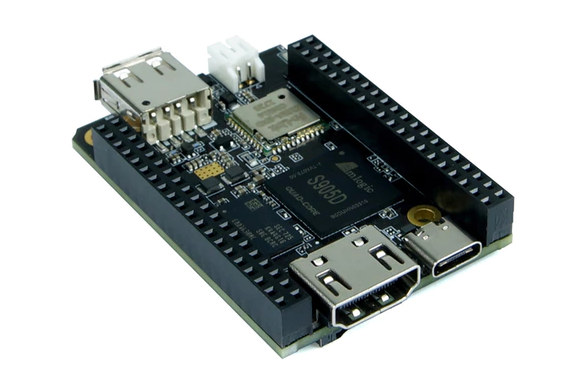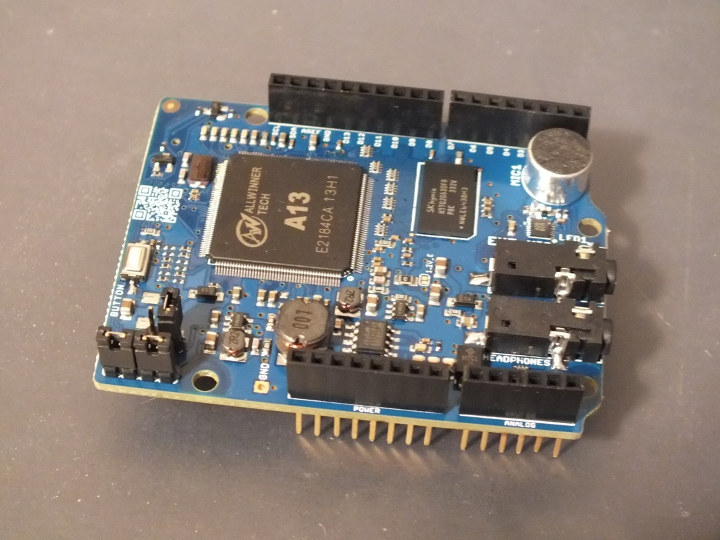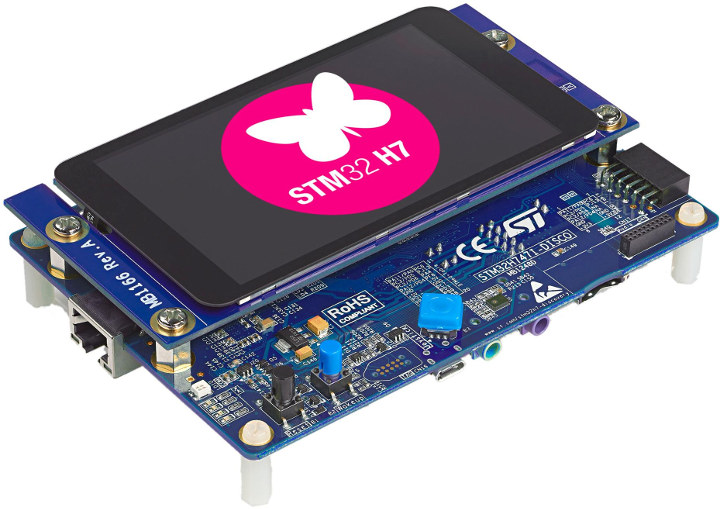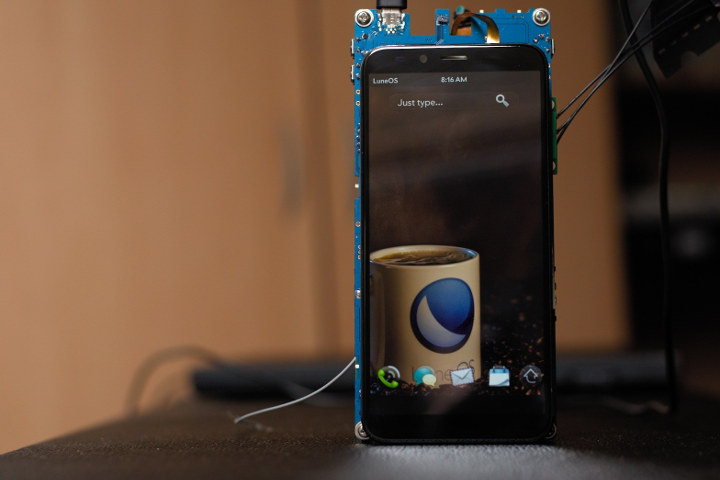Some may doubt RISC-V will ever challenge Arm at least in some markets, but the industry is investing in solutions based on the royalty-free open source ISA, with this week SiFive securing $65.4 Million from various investors including Qualcomm Ventures LLC, and the announcement of the launch of the OpenHW Group, a new not-for-profit global organization aims to boost the adoption of open-source processors currently backed by 13 companies, and aiming to reach 25 sponsors by year’s end. SiFive gets more interest from investors Here’s the main part of the announcement of SiFive’s new series D funding: SiFive, Inc., the leading provider of commercial RISC-V processor IP and silicon solutions, today announced it raised $65.4 million in a Series D round led by existing investors Sutter Hill Ventures, Chengwei Capital, Spark Capital, Osage University Partners and Huami, alongside new investor Qualcomm Ventures LLC. This Series D round brings the total […]
Mcuzone RK3308 SoM and MDK3308-EK Evaluation Kit are Designed for Smart Voice Applications
Rockchip RK3308 is a quad-core Cortex-A35 processor that was announced in 2018 together with RK3326 specifically for Smart AI solutions. While the processor is equipped with an RGB LCD output interface, it does not come with a 2D or 3D graphics accelerator, so it’s better suited to smart speakers with an optional display using a basic user interface. I’ve not seen many hardware platforms or boards based on the processor, but today I noticed “Hangzhou Wild Chip Tech” had an RK3308 system-on-module, as well as development kits for sale on Aliexpress with the module price starting at $23. Mcuzone MDK3308 Coreboard Specifications: SoC – Rockchip RK3308 quad-core Cortex-A35 processor @ 1.3 GHz with NEON and VFPv4 FPU System memory / storage configurations: 256MB DDR3/3L + 256MB NAND flash 512MB DDR3/3L + 8GB eMMC flash 2x 100-pin dual row headers (1.27mm pitch) exposing: Display – LCD interface up to 1024×600 (RGB), […]
iWave Systems Unveils iW-RainboW-G34M-SM i.MX 8M Mini/Nano System-on-Module
NXP nomenclature for their i.MX 8M processors can be a little confusing. First discovered in 2016, the original i.MX 8M processor family comes with one to four Arm Cortex-A53 cores, a real-time Cortex M4 core, targets multimedia application with FullHD or 4K decoding/encoding support and is manufactured using a 28nm process. NXP then announced i.MX 8M Mini processor family in February 2018 with a 14-nm FinFET processor allowing a higher maximum CPU frequency of 2.0 GHz, less video output interfaces (no HDMI, nor DisplayPort), and optional Full HD video encoder and decoder, .e.g no 4K. Finally, earlier this year, the company unveiled NXP i.MX 8M Nano further power-optimized with the same 14nm manufacturing process, but a lower frequency of 1.5 GHz, and a Cortex-M7 core replacing the Cortex-M4 core found in previous i.MX 8M processors. This allows i.MX 8M Nano SoC to have a 2W TDP, and achieve sub-watt power […]
Friday Fun: Play Tetris in a Linux Terminal
Here at CNX Software, we are all about providing useful information to our readers that will save them time, money and greatly increase their productivity. So I apologize in advance, and I’m sorry to say I’ve just found out it ‘s possible to play Tetris in a Linux terminal. Installation is super easy:
|
1 |
sudo apt install tint |
Now just run the program
|
1 |
tint |
and have fun. The screenshot above is from my Acer laptop running Ubuntu 18.04, but does it also work over SSH in NanoPi NEO running Armbian? You bet it works! 🙂 As a side note, June 6 is the Tetris anniversary since the first playable version was released on June 6, 1984. That means the game is not just 35 years old. If Tetris is not your thing, but it’s still a slow Friday, and the boss is not around, you can configure sudo to return insults when you type […]
C.H.I.P. is Back via PopCorn Computer with Allwinner or Amlogic Processor (Crowdfunding)
C.H.I.P was a $9 Linux computer launched in 2015 by Next Things Co., and followed by the $16 C.H.I.P Pro in 2016. Sadly the company eventually encountered financial troubles and had to fold last year. But the design was open source hardware, Source Parts managed to get hold of several original Allwinner GR8 systems-in-package, and in April we reported that they sold Kettlepop, a limited edition of a CHIP Pro derivative fitted with 8GB eMMC flash. Source Parts is now back with three CHIP lookalikes: Popcorn Original based on Allwinner R8/A13 Arm Cortex-A8 processor with 512MB RAM, and 32GB eMMC flash and 100% software compatible with the original C.H.I.P computer Super Popcorn Computer powered by Amlogic S905D quad-core Cortex-A53 processor Super ‘8’ Popcorn Computer powered by Amlogic S912 octa-core Cortex-A53 processor Popcorn Original is basically the same as C.H.I.P board except for the 32GB eMMC flash storage replacing the 4GB […]
MOVI Shield Enables Offline Speech Recognition of 150 Sentences on Arduino and Raspberry Pi
Smart speakers normally work both offline and online, but their offline ability is usually limited to just one or two wake words, that when detected let the speakers listen to speech that it will send the cloud for further processing. It’s done that way because the speakers would not have enough resources, e.g. processing power, storage to contain the whole data required for natural speech processing, and wake words reduce the number of requests to the cloud, and improve privacy. But in some cases, you may not need the full language, and instead would like to use several voice commands to control a device without the need or the ability to connect to the Internet/Cloud. So Audeme has designed an Allwinner A13 based Arduino shield named MOVI (My Own Voice Interface), and that can recognize and/or synthesize up to 150 full sentences of your choice in English, Spanish or German. […]
STMicro adds Dual-core Cortex-M7/M4 Microcontrollers to STM32H7 Family
STM32H7 is the high-performance family of STMicroelectronics Arm Cortex-M7 microcontroller. So far all STM32H7 MCUs had a single core, but the company has now added dual-core devices (STM32H74x/75x) comprised of an Arm Cortex-M7 core clocked at up to 480 MHz and a Cortex-M4 core clocked at 240MHz. In some way, this part is the little brother of STM32MP1 Arm Cortex-A7 + Cortex-M4 processor, as the new dual-core MCU also targets current products upgrade with the Arm Cortex-M4 core running legacy code, and the more powerful Cortex-M7 aimed at new features such as more sophisticated graphical interfaces, or offloading intensive workloads such as neural networks, checksums, DSP filtering, or audio codecs. Highlights of the new STM32H7 dual-core microcontrollers: Cores Arm Cortex-M7 at 480 MHz Arm Cortex-M4 at 240 MHz 3224 CoreMark / 1327 DMIPS Up to 2MByte Flash and 1Mbyte SRAM on-chip Dual-Bank Flash for seamless firmware updates “New” features MIPI […]
Software Development on Librem 5 and PinePhone Linux Phones is Progressing Nicely
Several Linux phones are expected this year including Purism Librem 5 and Pine64 PinePhone. Both companies have sent phone development kits out to developers a few months ago, and we are starting to see some nice progress for both phones. What made me write this post is an update from Purism comparing the boot time on Librem 5 running PureOS Linux distribution without specific optimizations yet, and HTC One Android smartphone. Librem 5 smartphone devkit takes 13 seconds to get to the lockscreen, while the Android phone takes over 40 seconds. Fair enough, most people won’t boot their phone often, but it still nice to know it won’t take long to turn on the phone from power off state. They also posted a progress report at the end of May saying calls are now working with better audio quality, fixed various issue with messaging in Chatty, work on Linux […]



